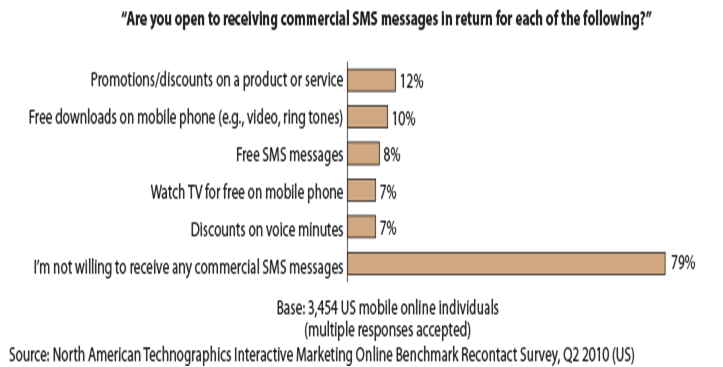The Data Digest: Consumer Interest In Mobile Marketing
Mobile marketing spend is forecast to hit around 750 million by the end of 2011 and more than 1,250 million by 2014. However, the number of consumers exposed to mobile advertising is still low. In fact, Forrester Technographics surveys shows that two-thirds of online mobile consumers don't remember being exposed to any mobile ads. Of those who had been exposed, the majority (52%) didn't take any actions. For those who did respond, calling a local business or storing a number as a new contact were the most popular activities.
But just because many consumers haven't engaged with mobile marketing yet doesn't mean they don't want to. In fact, 13% of online mobile consumers say that they would like to receive coupons to be used while shopping and 10% would like to be able to look up product information. About one-fifth of online mobile consumers are open to receiving SMS messages from companies in return for promotions, discounts, or free downloads(and this number jumps to more than one-third of Gen Yers).

But to be successful at their mobile efforts, companies need to determine which type of engagement will work best with their target audience and what key objectives resonate most. For example, are you trying to drive awareness, foot traffic, or campaign involvement? Understanding these objectives will help determine whether your organization should engage consumers through an SMS campaign offering a reward or whether it should try to intercept consumers while they are searching.
Fast Food chain Arby’s for example organized for Jimmy Kimmel, the talk show host, to eat and promote a Roastburger sandwich on his show Jimmy Kimmel Live. Viewers could text the word ROASTBURGER to receive a free sandwich with the purchase of any drink. The result: the restaurant received more than 177 thousand total entries from 150 thousand unique participants. Of these participants, 65,000 people opted-in to join the mobile loyalty club.